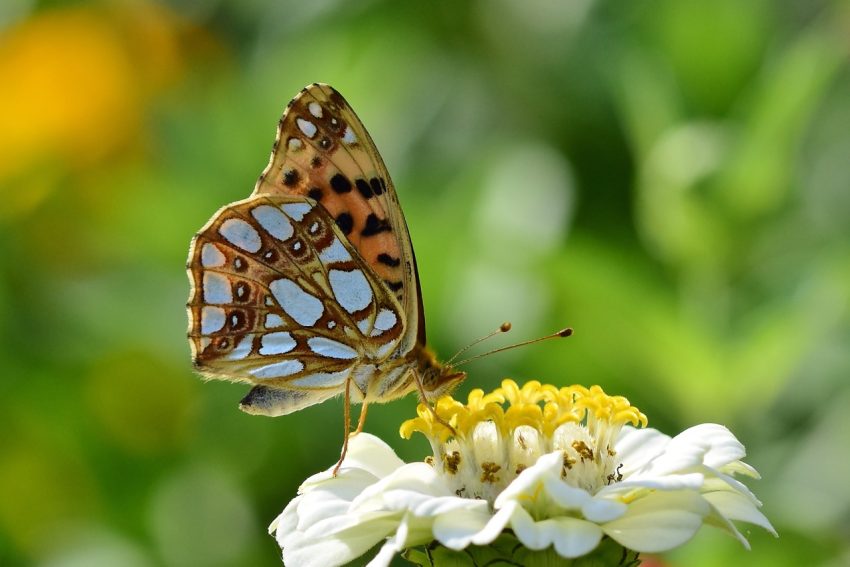In the delicate dance of nature, few phenomena captivate the human spirit as much as the extraordinary migration of butterflies. Beyond their ephemeral beauty, these winged wonders embark on an awe-inspiring journey that spans continents, defying the limitations of their delicate frames. In this blog, we delve into the enchanting world of butterfly migration, unraveling the mysteries, marvels, and significance of this remarkable natural spectacle.
The Monarch Marvel:
When we think of butterfly migration, the iconic monarch butterfly (Danaus plexippus) often takes center stage. These charismatic insects, with their vibrant orange wings adorned by black veins and white spots, undertake one of the most incredible migrations in the animal kingdom.
The monarch’s journey is nothing short of miraculous. Starting in the late summer or early fall, millions of monarch butterflies from eastern North America gather in clusters, preparing for an epic southward migration. These delicate creatures travel thousands of miles, reaching their wintering grounds in the oyamel fir forests of central Mexico.
Navigating the Skies:
What makes butterfly migration even more astonishing is the navigational prowess displayed by these seemingly fragile insects. Scientists believe that monarch butterflies use a combination of visual cues, the position of the sun, and an internal magnetic compass to find their way across vast distances.
As the sun’s position changes throughout the day, monarchs adjust their flight path to maintain a southwesterly direction. Their ability to sense the Earth’s magnetic field helps them stay on course, ensuring that they reach their overwintering sites with remarkable precision.
Generational Relay:
One of the most intriguing aspects of the monarch migration is the generational relay that takes place. The butterflies that embark on the southward journey are not the same individuals that complete the entire round trip. Instead, it’s a relay of generations.
The monarch butterflies that leave North America in the fall are the fourth generation of the year. They are born en route, lay eggs in the wintering grounds, and then perish. The next generation hatches, continues the journey northward, and repeats the cycle. It’s an intricate dance of life, death, and renewal that spans multiple generations and ensures the survival of the species.
Challenges Along the Way:
While the journey of butterflies might seem magical, it’s not without challenges. The migration is a perilous undertaking, with obstacles ranging from extreme weather conditions to predators and the ever-present threat of habitat loss. Changes in climate patterns and human activities pose additional challenges, affecting the availability of nectar sources and disrupting the delicate balance that sustains these incredible migrations.
For the monarchs, their wintering grounds in Mexico face threats such as illegal logging and habitat fragmentation. Conservation efforts are underway to protect these vital habitats and ensure the survival of the monarch butterfly migration.
Beyond Monarchs:
While the monarchs steal the spotlight, they are not the only butterflies engaged in remarkable migrations. Across the globe, various species undertake journeys that are equally awe-inspiring.
For instance, the painted lady butterfly (Vanessa cardui) is known for its long-distance migrations, with individuals traveling from Europe and Asia to North Africa. The red admiral butterfly (Vanessa atalanta) is another migratory species that navigates across continents in search of suitable breeding grounds.
The Significance of Butterfly Migration:
Beyond the sheer wonder of their journey, butterfly migration holds ecological significance. These migrations contribute to the pollination of plants along their routes, playing a crucial role in maintaining biodiversity and supporting ecosystems.
The interconnectedness between butterflies and their environments is a delicate dance that underscores the fragility and resilience of nature. As butterflies move across landscapes, they fulfill vital ecological functions, ensuring the reproduction of plants, supporting food webs, and contributing to the overall health of ecosystems.
Conservation Imperatives:
As we marvel at the ethereal beauty and intricate migrations of butterflies, it’s essential to recognize the conservation imperatives associated with their journeys. Human activities, including habitat destruction, pesticide use, and climate change, pose significant threats to these delicate creatures.
Conservation efforts must focus on preserving critical habitats, reducing the use of harmful pesticides, and addressing climate change. Additionally, citizen science initiatives, such as butterfly monitoring programs, play a crucial role in gathering data that informs conservation strategies and helps track the health of butterfly populations.
Celebrating Butterflies:
In a world filled with technological marvels, the migration of butterflies serves as a poignant reminder of the wonders that unfold in the natural realm. Their journey symbolizes resilience, adaptation, and the intricate web of life that connects all living beings.
As stewards of the Earth, we have the responsibility to celebrate and protect these delicate creatures. Creating butterfly-friendly habitats in our gardens, supporting conservation initiatives, and fostering awareness about the importance of butterflies contribute to the preservation of these extraordinary migrations.
The migration of butterflies is more than a mere biological phenomenon; it’s a tapestry woven with threads of resilience, beauty, and renewal. As butterflies flutter across continents, they carry with them the essence of life’s cyclical dance—birth, exploration, reproduction, and the eternal cycle of renewal.
In the delicate wings of butterflies, we find inspiration to appreciate the interconnectedness of life and to embrace our role as custodians of the planet. As we witness the extraordinary migration of butterflies, let it serve as a gentle reminder of the fragility and resilience of the natural world—a world where even the most delicate beings can embark on journeys that transcend our understanding and leave us in awe of the wonders of nature.

